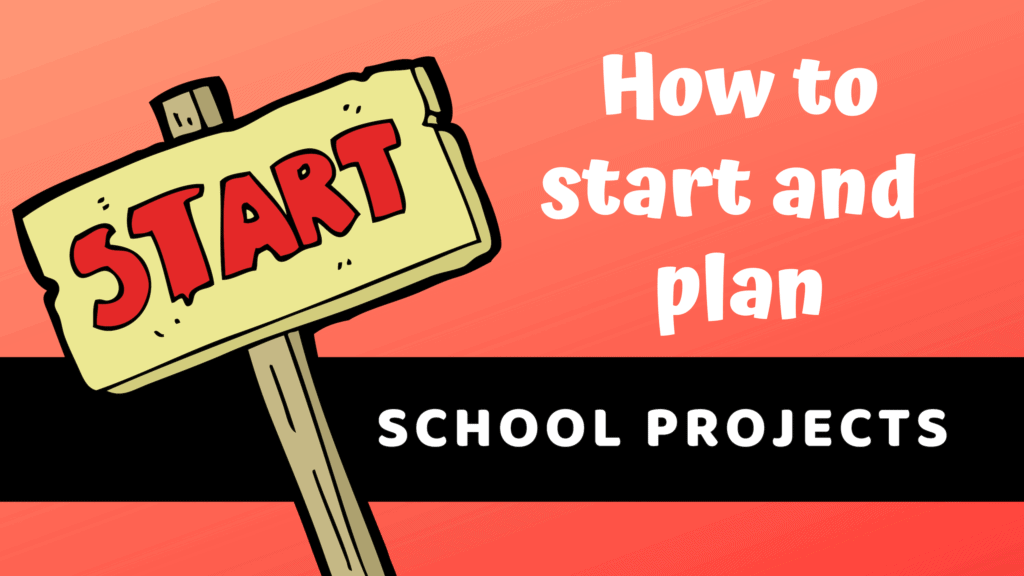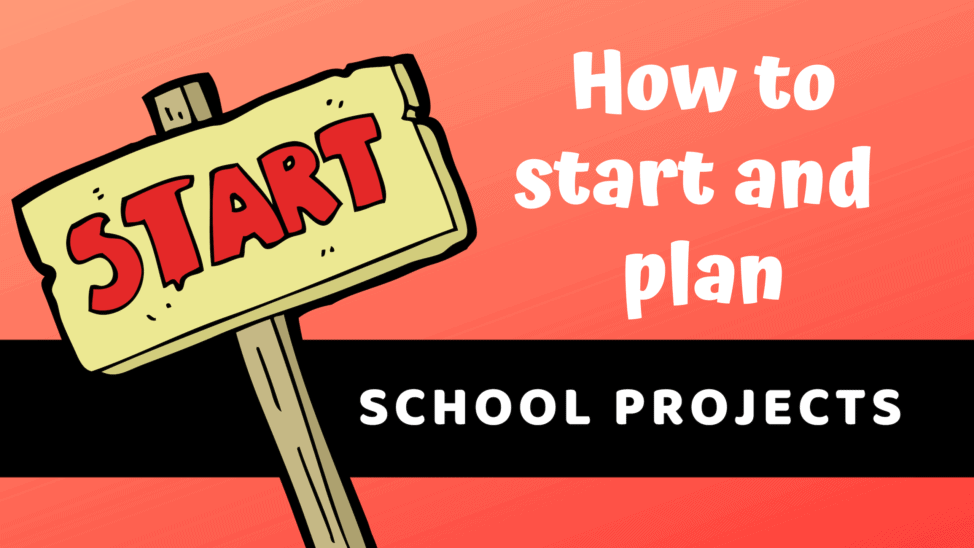
By Katie Azevedo, M.Ed.
The following project management strategy will teach you how to start a project for school. It also covers how to plan and complete basically any project – no matter the subject or your grade level. Not a student? It can even help you organize and get through work or home projects.
The hardest part about doing a school project can be figuring out how to start. We can often feel so overwhelmed by the size, scope or complexity of what we have to do that we don’t even know where to begin. For many students, not knowing how to start a project for school can lead to complete paralysis — in other words, not starting the project at all.
(Do you get overwhelmed a lot? These practical tips might help. Or if you dread starting essays, these 3 tips might get you moving.)
Before I go any further: You can download and print my SchoolHabits project manager template here (free) to help you get started using the strategy I’m about to teach you.
How to start a project for school
No matter how big your project or assignment, it can be reduced into a series of 15-minute tasks.
Let me repeat that: You can break down every single long-term or large-scale assignment into a bunch of tasks that each take 15 minutes or less.
That’s the trick.
That’s how productive people actually get things done. That’s the golden nugget. You could seriously build an empire (or get your history project done in time) by doing one 15-minute task after another.
When we are able to break down huge and complicated projects into nothing more than a series of 15-minute tasks, we begin to see them as doable. We are no longer paralyzed by the idea of one giant thing we must do. We think, Only 15 minutes? Yeah, I got that.
Here are the steps for starting a school project by breaking it down:
1. Use my free SchoolHabits project manager to plan your project.
2. Begin by breaking down your project into no more than 4 main parts. These steps should be general and sequential.
3. Break each of the 4 parts into a series of 15-minute tasks. If you think a task is going to take more than 15 minutes, then break it down more.
4. Start your project by completing just the first 15-minute task you’ve written down. (Oh heck yes – you better believe you’re writing these steps down!)
5. Once you’ve completed the first task, do the next one, and the next one, and the next one … until you’re done.
If you get stuck anywhere — for example, if you have a question or some part of the project/assignment is unclear — try to get an answer right away: email the teacher, ask a friend, Google it, whatever. And in the meantime, see if you can move on to the next 15-minute task so you don’t lose momentum.
Example of how to start a project for school using the steps outlined above:
Project: History paper on the causes of World War I
MAIN STEPS:
- Write thesis
- Gather materials
- Write outline
- Write and edit paper
15-MINUTE TASKS:
1. Write thesis
a. Review notes about the causes of the war
b. Do a quick Google search about the causes of the war
c. Write out a few different drafts of a possible thesis
d. Run the thesis by the teacher
2. Gather materials
a. Collect all relevant class notes and put them in a folder
b. Go to the library to search for books on the topic (this task will take more than 15 minutes, so you could further break it down into small tasks such as “Find one book on the topic,” “Find a second book on the topic,” etc.)
c. Search online academic resources for information (again, this task will take more than 15 minutes, so you could further break it down into “Find and print one online journal article about the topic,” “Find and print one primary source from President Wilson,” etc.)
d. Organize all materials into one place
3. Write outline
a. Pinpoint 3-4 main causes of the war
b. Read through notes to find evidence/quotes of each cause of the war (Yup, this step will take more than 15 minutes, so break it down further – perhaps spending 15 minutes on each article you find)
c. Open and name a Google Doc (or whatever you use)
d. Write a basic outline of the essay using notes/quotes
4. Write and edit paper
a. Open and name a Google Doc, and set up the proper heading and formatting
b. Write introduction
c. Write first body paragraph
d. Write second body paragraph
e. Write third body paragraph
f. Write conclusion
g. Edit essay
Ready to try this strategy for how to start a project for school? If you’re on the fence, I challenge you to actually give it a shot the next time you need to do any assignment that might take you more than two hours to complete. I have taught this time-management strategy to thousands of students and the payoff is incredible.
Bonus Resource: How to Get an A on Your Final Projects: 5 Tips for Students
Don’t forget: Here’s my project management template – SchoolHabits project manager – to get you started.

